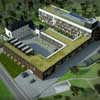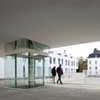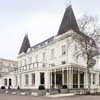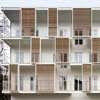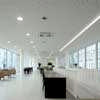Triamant Velm Turnhout, Belgian Architecture, Architect, Project, Design, Photos
Triamant Velm, Belgium : Turnhout Building
Turnhout Health Building – design by BURO II / ARCHI+I cvba
18 Aug 2011
Triamant Velm
Location: Turnhout, Belgium
Design: BURO II & ARCHI+I cvba, Belgium
Triamant Velm – The future of care
The Flemish government is convinced that enabling the elderly to live at home in their own residential surroundings close to family, neighbours, friends and acquaintances is the ideal situation for them.
Care for Life seeks to redefine living at home on the basis of a specific vision all of its own. Their departure point is an integrated approach to housing and care. For the architects, the client’s decision to establish a new concept focused around maximising comfort for different users undermined the obviousness of every known construction programme. The central theme was not how to build an old people’s home, but how to link the different forms of providing care to the experience of a normal everyday residential concept. An additional consideration was that this situation must not in any way impair the dignity of the tenant/user. The spatial challenge that this presented was to merge independence and care, rather than to build or alter individual entities.
This new approach adds a new dimension to comfort, namely giving the residents a spatially recognisable place that they can make their own. Deepening a behavioural pattern focused on the comfort of care and behaviour focused on independence and communality made it necessary for BURO II & ARCHI+I to discard obvious spatial patterns of housing for the elderly and the patronisation evident in care. However, architects are not welfare workers, so BURO II & ARCHI+I had to search for a way of embedding this innovative organisation of care within a future-oriented spatial perspective. In other words, the designers had to bring the unknown to life in the client’s imagination and make the client believe in it.
Maximum integration of different housing, care and welfare services is being pursued at the residential care site for the different target groups. These consist of people of different ages, origins, incomes and social class. Care for Life will provide the critical and essential care functions (core tasks) and assume the role of care coordinator.
The site is open at all levels. This was precisely the Triamant vision – making functional diversity and experience the core consideration, with everybody welcome to visit and use the site. Community integration – a consequence of social accessibility – is being achieved at micro level by integrating care-unrelated facilities such as a crèche or sports and wellness facilities, at the residential site. It is achieved at macro level by opening up the facilities to people from the wider surroundings and by making the services and activities accessible to several target groups. To open up the site and integrate it in the landscape, everything has been made transparent at ground floor level. From everywhere on the site, from every room and from every apartment, the residents will have a direct view of everything going on below.
The place ultimately chosen was the castle domain of Peten in Velm, a rural village south of Sint-Truiden. The residence has an English garden. The typography of the estate is pronounced, with a height difference of approximately 13 metres.
The domain was not in good condition: the castle, the dilapidated coach house and the park had been seriously neglected, while at first sight the high buildings of the old school from the 1960s and low classroom buildings from the late 1970s were suitable only for demolition. A thorough analysis of the countryside and existing buildings made clear that the castle would be given a central place in the concept for the master plan as a rural beacon and a witness to history, provided that it was thoroughly restored. The high boarding school building, with a structure that still appeared robust, was renovated and incorporated in the new construction programme. All other buildings were demolished.
The vision of housing and care blending seamlessly into each other was translated into the master plan. The programme for the residential care campus has three residential forms: a care hotel, care flats of different sizes and 20 surface-level homes of varying sizes. The residential programme was fleshed out with communal functions that include a simple shop, a doctor’s surgery, a utility area and a swimming pool.
The master plan is based on different phases of construction. An initial phase will group the buildings compactly around two large patios. One inner garden faces the park and the other the new care campus. All public functions are located at ground level. The initial construction phase will be followed by a second development to the north of the castle complex. The buildings here will be U-shaped, sunken into a small valley, following the inclination of the countryside. This development will contain a care hotel plus a few care flats. A third zone, east of the castle, has an entirely different character: a string of smaller buildings with care flats and a small number of semi-detached houses will be embedded very prominently at the top of the plateau, affording a beautiful view of the surroundings.
The architecture of the complex was deliberately kept austere. The white materials give the inside of the complex a sunny look and feel as well as harmonising the new buildings with the castle, which will be given pride of place on the campus because of its role as the Grand Cafe. The dark brick facades extending along the outside will provide a reference, together with the compact arrangement of the buildings, to the typology of the former square farmstead.
A great deal of attention was devoted to adhering to the predetermined budget and to limiting operating costs. After all, the new care concept will only succeed if it proves to be a profitable as well as a comfortable project. The very intensive cooperation between the client, architect and contractor is an exciting but complex experience, with use being made of all the competences that the firm possesses. The project exemplifies how client and architect can together undertake a constantly evolving process to give shape to an innovative residential care concept.
Triamant Velm Turnhout – Building Information
Location: Turnhout, Belgium
Architects: BURO II & ARCHI+I cvba, Belgium
Photographs: Filip Dujardin
Triamant Velm Turnhout images / information from FD
Location: Turnhout, Belgium
Belgian Architecture
Belgian Architectural Designs – chronological list
Architectural Tours – city walks
Belgian Building – Recent Designs
Bruxelles Gare du Midi
Ateliers Jean Nouvel
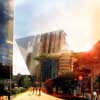
image from architect
Bruxelles Gare du Midi
Machelen-Diegem Masterplan
Maxwan
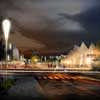
image from architect
Brussels Masterplan
Cheval Noir Housing
L’Escaut-Gigogne
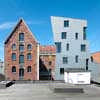
photograph : Marc Detiffe
Cheval Noir Brussels
Covent Garden
Art & Build Architect
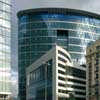
picture from architect
Covent Garden Brussels
Comments / photos for Triamant Velm – Turnhout Building page welcome

